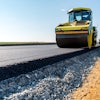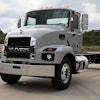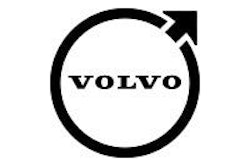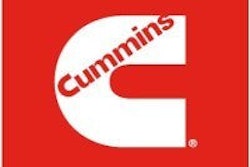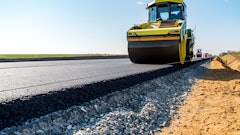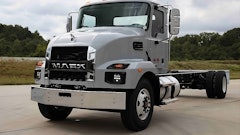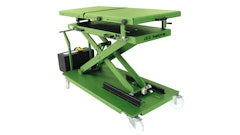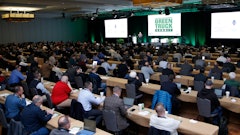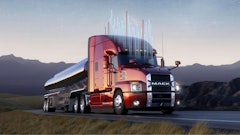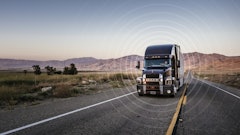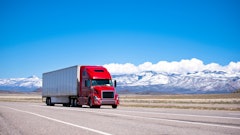Non-attainment zones are regions that do not conform to mandates in the Clean Air Act due to excessive levels of one or more regulated pollutants. Officials governing non-attainment zones must develop approved strategies to achieve compliance, which often means tougher diesel emissions regulations. As these regional restrictions continue to spread, consider the impact while there is time to develop a strategy.
"Contractors who want to bid on work in a non-attainment zone need to know what mandated local regulations or contract requirements their equipment must meet," says Clint Schroer, off-highway communications for Cummins Inc.
Many regions have targeted specific solutions. "The impact on equipment owners in non-attainment areas - which includes most major metropolitan regions across the U.S. - is significant and will require that the engines in their equipment be upgraded to comply with local regulations," states Glen Chrusciel, program manager, repower and retrofit for John Deere Power Systems. "The four primary ways to achieve compliance are: retrofitting an existing engine with aftertreatment devices; repowering an older piece of equipment with a newer engine; purchasing new equipment; or rental of an emission-compliant machine."
Terry Sears, emissions solutions product manager at Caterpillar, adds, "In some regions, moving from an unregulated machine to a used Tier II will meet local requirements."
It's important to understand what emissions requirements specific regions are targeting and fit your fleet to those standards. "For example, in the Northeastern U.S., they are in non-attainment for particulate matter (PM) and are focused on aftertreatment. In Texas, they are focused on NOx (nitrogen oxide), so they would like to see more repowers," Sears points out. "If a contractor has picked up a job that requires a special machine only for a short period, the answer is to rent. It is a great way to get the latest equipment for a short period of time."
Projects in non-attainment zones have to be examined with all the alternatives in mind. "The most viable long-term solution is the one that allows the contractor to be competitive, and yet fits with their long-term equipment strategy," says Sears. "There is no one solution that fits all. It will take smart fleet management and combinations of new, used, rental and retrofit to navigate the future local emissions requirements."
DPFs prove cost effective but complex
"Retrofitting existing equipment with verified aftertreatment devices is a cost-effective solution, but it's also a complex process," says Chrusciel. "Retrofit programs typically require retrofit devices to be verified by either the EPA or California Air Resources Board (CARB)."
Most regulations focus on reduction of PM along with NOx. According to Chrusciel, "A retrofit program will identify the amount of emission reduction required by the verified device. In the case of PM reduction, there are three levels: Level 1 (greater than or equal to 25%), Level 2 (greater than or equal to 50%) and Level 3 (greater than or equal to 85%)." Select aftermarket devices with the highest verification levels (e.g., Level 3 PM) when retrofitting equipment to achieve best available control technology (BACT).
PM reduction can often be handled with a diesel particulate filter (DPF). "Cummins currently sees more DPF installations in the retrofit market than other types of aftertreatment systems," says Schroer. "So far, school buses, transit and refuse trucks have had the greatest demand for retrofits. Going forward, the technology can be applied to construction and agricultural equipment, ports, on-road trucks, locomotives, marine applications and so on."
The cost for a DPF can range from $2,000 and up. "The market for off-road retrofit is complex," says Schroer. "There is significant proliferation of equipment and engine combinations across all horsepower ranges and applications. Our strategy is to use our Tier IV development experience to bring products to the off-road market that will satisfy the BACT requirement and encompass various aftertreatment technologies."
Two DPF technologies currently exist: passive PM filters and active PM filters. According to John Bartz, emissions solutions manager, Volvo Construction Equipment, the passive technology can remove 99.9% of PM without creating additional nitrogen dioxide (NO2) emissions. However, he cautions, "While it can cost half the initial purchase price of active filter technology, if a passive filter is misapplied, it will result in unscheduled downtime to swap the plugged filter."
For the passive filter to work, Bartz notes, an exhaust temperature profile must be logged in the application where the machine is running. The duty cycle must be severe enough to generate the required exhaust temperatures for a long enough period to regenerate. "If the application changes, the system may not work," he states. This makes it necessary to buy an additional filter and swap filters out as they become plugged.
A plugged particulate filter can create several issues. According to Volvo, back pressures must be monitored to prevent engine damage.
Regeneration gets rid of filter-plugging soot; heat during regenerating turns this soot into ash. Consequently, Volvo prefers active PM filter technology. According to the company, this technology works on any machine in any application. It is not sensitive to operating temperature or duration of temperature like a passive filter. Regeneration is accomplished during a shift change or lunch break, and it doesn't measurably affect fuel consumption.
No matter which solution you choose, certain conditions must be met before attempting a retrofit. "The engine must be in good working order," says Sears. "Use only Ultra-Low Sulfur Diesel (ULSD). And in the case of a passive DPF, the machine must work hard enough to develop the heat required for regeneration."
Installation is not something your technicians should try to do in house. "Due to the significant proliferation of equipment and engine combinations across all horsepower ranges and applications, it is impossible to find aftertreatment solutions that are universally applicable," Chrusciel states. "Aftertreatment is not a one-size-fits-all proposition and should only be installed by highly trained technicians."
Space is often a limiting factor. "Some applications simply do not have the physical space to accommodate the DPF, which can be up to three times larger than the muffler it replaces," says Chrusciel.
"In the event a DPF can't be mounted under a hood due to size and/or temperature constraints, [the technician] needs to take into account the impact on operator visibility," notes Sears.
Chrusciel agrees, adding, "It is very important for the aftertreatment installer to review each application for not only operational considerations, such as load profile and idle times, but also other important criteria, such as line-of-sight (visibility) and structural integrity."
Challenges with repowers
Repowering machines with higher tier engines garners a lot of attention.
"It can make sense to repower a piece of construction equipment if the hours on the machine are relatively low and installation of the new engine does not require a major redesign," says Schroer. "On top of lower emissions, a new engine may have improved response and fuel efficiency, or improved horsepower and torque at a similar displacement."
According to Volvo, this is an economically and technically feasible solution for early Tier 0 and Tier I repowers, but mostly for larger equipment. However, there are some drawbacks to consider when installing newer engines in older equipment. Part of this is due to the cooling requirements and the electronics on modern engines.
"Cooling system requirements have increased in order to handle the higher heat loads," says Bartz. "Installing a new engine that requires significant machine cooling system updates can be very expensive, require extensive modifications and, if not done correctly, can lead to overheating of [more than just] the engine."
But there can be advantages. "Repowering is one of the most popular emission reduction solutions because it brings real value to a piece of equipment," says Chrusciel. "By repowering equipment from Tier 0 to Tier III, contractors not only gain emissions compliance, they will also realize increased residual value to the equipment, as well as improved productivity and fuel economy."
Non-certified and Tier I machines were not necessarily designed to accommodate the technology of newer engines. Consequently, John Deere offers an engineered solution to repower some key equipment models up to Tier II or III certification levels.
"The repower includes a new certified production Tier II or III engine and an engineered kit that includes all of the components needed to not only replace the engine, but also maintain original equipment performance," Chrusciel explains. The engineered kit makes it easy for dealers to perform the engine swap. "The cost includes the price of the new engine and all engine system parts such as the cooling, air and exhaust systems."
As you might suspect, the cost to repower to Tier II is generally lower than repowering to Tier III. "A Tier II repower kit usually consists of an engine with some additional installation parts," says Chrusciel. "However, when repowering to a Tier III, the dealer often must make significant changes to the cooling system and adapt the electronic engine to the mechanical controls of the legacy machine."
Caterpillar offers extensive repower services, as well. "We have over 100 repower options available through our dealer network," says Sears. "The cost of an emissions upgrade repower can vary depending on the tier level. However, if a job requires a higher tier level machine, it can make good sense. In some cases, there may also be funding available that will help offset the cost of the emissions tier level upgrade.
"The advantage to the repower is the customer keeps a piece of equipment they are familiar with, and it can be done at a lower cost vs. replacing with a new machine. In many cases, fuel economy will improve while reducing emissions," he adds. "It should be noted, however, that an upgrade from an unregulated machine to a Tier III machine might require extensive cooling systems and electronics modifications."
Find local expertise
No matter which non-attainment zone you target, consult with local experts, including your equipment dealer, well before the work begins.
"With drastically varying programs in each non-attainment area, contractors will need to work with their local regulatory authorities to determine how specific local programs will affect them before purchasing new equipment or determining whether they're going to retrofit or repower an existing piece of equipment," says Chrusciel.
"Understanding the pros and cons of each solution," he adds, "allows contractors to select the best and most cost-effective strategy for their specific needs."


